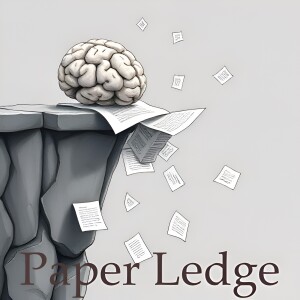
- Podcast Features
-
Monetization
-
Ads Marketplace
Join Ads Marketplace to earn through podcast sponsorships.
-
PodAds
Manage your ads with dynamic ad insertion capability.
-
Apple Podcasts Subscriptions Integration
Monetize with Apple Podcasts Subscriptions via Podbean.
-
Live Streaming
Earn rewards and recurring income from Fan Club membership.
-
Ads Marketplace
- Podbean App
-
Help and Support
-
Help Center
Get the answers and support you need.
-
Podbean Academy
Resources and guides to launch, grow, and monetize podcast.
-
Podbean Blog
Stay updated with the latest podcasting tips and trends.
-
What’s New
Check out our newest and recently released features!
-
Podcasting Smarter
Podcast interviews, best practices, and helpful tips.
-
Help Center
-
Popular Topics
-
How to Start a Podcast
The step-by-step guide to start your own podcast.
-
How to Start a Live Podcast
Create the best live podcast and engage your audience.
-
How to Monetize a Podcast
Tips on making the decision to monetize your podcast.
-
How to Promote Your Podcast
The best ways to get more eyes and ears on your podcast.
-
Podcast Advertising 101
Everything you need to know about podcast advertising.
-
Mobile Podcast Recording Guide
The ultimate guide to recording a podcast on your phone.
-
How to Use Group Recording
Steps to set up and use group recording in the Podbean app.
-
How to Start a Podcast
-
Podcasting
- Podcast Features
-
Monetization
-
Ads Marketplace
Join Ads Marketplace to earn through podcast sponsorships.
-
PodAds
Manage your ads with dynamic ad insertion capability.
-
Apple Podcasts Subscriptions Integration
Monetize with Apple Podcasts Subscriptions via Podbean.
-
Live Streaming
Earn rewards and recurring income from Fan Club membership.
-
Ads Marketplace
- Podbean App
- Advertisers
- Enterprise
- Pricing
-
Resources
-
Help and Support
-
Help Center
Get the answers and support you need.
-
Podbean Academy
Resources and guides to launch, grow, and monetize podcast.
-
Podbean Blog
Stay updated with the latest podcasting tips and trends.
-
What’s New
Check out our newest and recently released features!
-
Podcasting Smarter
Podcast interviews, best practices, and helpful tips.
-
Help Center
-
Popular Topics
-
How to Start a Podcast
The step-by-step guide to start your own podcast.
-
How to Start a Live Podcast
Create the best live podcast and engage your audience.
-
How to Monetize a Podcast
Tips on making the decision to monetize your podcast.
-
How to Promote Your Podcast
The best ways to get more eyes and ears on your podcast.
-
Podcast Advertising 101
Everything you need to know about podcast advertising.
-
Mobile Podcast Recording Guide
The ultimate guide to recording a podcast on your phone.
-
How to Use Group Recording
Steps to set up and use group recording in the Podbean app.
-
How to Start a Podcast
-
Help and Support
- Discover

Computer Vision - GLUS Global-Local Reasoning Unified into A Single Large Language Model for Video Segmentation
Alright learning crew, get ready for a deep dive into the world of video understanding! Today, we're tackling a paper that's trying to make computers better at something that seems super simple to us: watching a video and picking out exactly what you're talking about.
Think about it: if I said, "Hey, check out that dog chasing the frisbee," you instantly know which dog, which frisbee, and you can follow them through the whole video, right? But for computers, this is HARD. This paper introduces a new system called GLUS, and it's trying to solve this problem in a really smart way.
The core challenge is something called Referring Video Object Segmentation (RefVOS). Sounds complicated, but it just means "pointing out a specific thing in a video based on a description and then tracking it." Previous attempts using fancy AI models called Multi-modal Large Language Models (MLLMs) (basically super-smart AI that can understand both words and images) struggled with a trade-off.
- Some were good at understanding the overall scene from a few key moments – like getting the gist of the video.
- Others were good at closely following objects frame-by-frame, like a hawk following its prey.
The problem is, they couldn’t do both at the same time very well. It's like trying to drive while only looking at the rearview mirror or only looking a few feet in front of your car! Not ideal, right?
Here's where GLUS comes in. The researchers realized that you need both a good overall understanding AND the ability to track things closely. They figured out a way to feed the MLLM what they call "context frames" – like snapshots giving the AI the big picture. These give global information.
Then, they feed it a stream of "query frames" – a continuous flow of images that allow the AI to track the object closely. This addresses the local object tracking. It's like reading the summary of a book, then actually reading it, chapter by chapter.
But wait, there's more! They also trained GLUS with something called a pre-trained VOS memory bank. Think of this as a library of video tracking knowledge. This allows GLUS to remember how things move over both short and long periods of time.
"GLUS delivers a simple yet effective baseline, achieving new state-of-the-art for MLLMs on the MeViS and Ref-Youtube-VOS benchmark."Now, MLLMs have a limited amount of "brain space," or context window, to process information. So, the researchers came up with some clever tricks to make GLUS more efficient. One trick is object contrastive learning. This helps GLUS tell the difference between the object it's supposed to be tracking and other similar-looking objects in the scene. Imagine trying to find your black backpack in a room full of black backpacks – that's essentially what GLUS is doing!
They also use a self-refined framework to pick out the most important frames in the video and then use those frames to "spread" the information to the other frames. It's like only taking notes on the most important parts of a lecture and then using those notes to remember everything else!
So, why should you care? Well:
- For AI researchers: This is a new approach that could lead to even better video understanding systems.
- For anyone working with video editing or analysis: This could make it easier to automatically identify and track objects in videos, saving time and effort.
- For the average person: Imagine AI assistants that truly understand what you're talking about when you show them a video!
Ultimately, this research is about making computers better at seeing and understanding the world around them, just like we do.
Here are a couple of things that popped into my head that we could chew on:
- How close do you think we are to AI that can truly "understand" video content the way a human does, and what are the biggest remaining hurdles?
- What are some of the unexpected ethical implications of having AI that can track objects and people in videos with such precision?
Until next time, keep learning!
Credit to Paper authors: Lang Lin, Xueyang Yu, Ziqi Pang, Yu-Xiong Wang
More Episodes
Create your
podcast in
minutes
- Full-featured podcast site
- Unlimited storage and bandwidth
- Comprehensive podcast stats
- Distribute to Apple Podcasts, Spotify, and more
- Make money with your podcast
It is Free
- Privacy Policy
- Cookie Policy
- Terms of Use
- Consent Preferences
- Copyright © 2015-2025 Podbean.com





